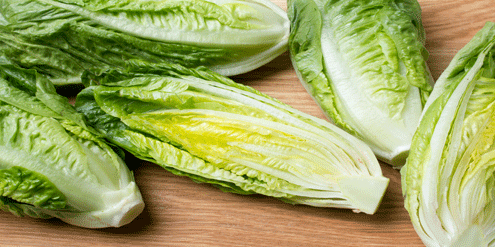Romaine lettuce outbreak linked to growing region in California
An outbreak of Escherichia coli in romaine lettuce that led to a nationwide disposal of the leafy greens just days before Thanksgiving has been linked to a growing region in California. Officials said companies will begin voluntarily labeling romaine to make it easier to identify the source of future outbreaks.
According to the FDA, the outbreak “appears to be related to ‘end of season’” lettuce from the Central Coast growing regions of central and northern California. It said consumers should still not eat romaine lettuce grown in this region but that lettuce from other regions is OK.
“At the time of the outbreak, the vast majority of the romaine on the market was being grown in the Central Coast region of California. Since then harvesting of romaine lettuce from this region has ended for the year,” the FDA said.
Romaine lettuce production in the United States has shifted to winter growing regions, principally desert areas of California and Arizona and in Florida but also in Mexico and other states, the FDA said.

It said there is no recommendation for consumers or retailers to avoid eating or serving romaine lettuce harvested outside of the implicated growing region in California.
“At this time, the FDA has no information to suggest any of these growing areas are involved in the current outbreak, which began well before any romaine lettuce from these winter growing locations was available for harvest. In addition, hydroponic romaine lettuce and romaine lettuce grown in greenhouses also marketed in the U.S., but there is no information to suggest these products are implicated in any identified E. coli O157:H7 outbreak,” the agency said.
The outbreak of Shiga toxin-producing E. coli O157:H7 has sickened 43 people in 12 states, hospitalizing 16, according to health officials. An additional 22 patients have been identified in Canada.
When the outbreak was announced Nov. 20, the CDC advised consumers to throw any type of romaine lettuce and said retailers and restaurants should stop selling or serving it. The FDA requested a market withdrawal of all romaine lettuce, saying that a “clean break” was the fastest way to get potentially contaminated lettuce off shelves and tables.
“The romaine lettuce industry agreed to comply with the FDA’s request to withdraw any romaine lettuce on the market on that date, and available information suggests this action was effective in removing potentially contaminated romaine lettuce from retail establishments,” the FDA said.
Since then, producers and distributors have agreed to label romaine lettuce entering the market with the location and date of harvest to make it easier to identify the source of future outbreaks, according to the FDA. The agency said it has assurances from the industry that such labeling will become standard practice.
“In addition, the leafy greens industry has agreed to establish a task force to find solutions for long-term labeling of romaine lettuce and other leafy greens for helping to identify products and to put in place standards for traceability of product,” the FDA said. “The task force will also examine information from this outbreak to identify measures that led to its occurrence and how to prevent ongoing safety problems with romaine lettuce. One outcome could be to extend the commitment for labeling for origin and date of harvest to other leafy greens.”
Lab tests showed the strain of E. coli O157:H7 causing the current outbreak is similar to a strain that caused an outbreak in the U.S. and Canada last year.
A CDC spokeswoman told Infectious Disease News that the current outbreak is not related to an outbreak of E. coli O157:H7 linked to romaine lettuce that sickened 200 people in 36 states earlier this year. That outbreak, which was said to have ended as of June 28, was linked to a growing region in Arizona and California. – by Gerard Gallagher

